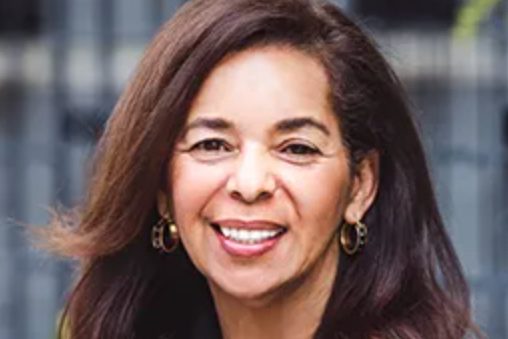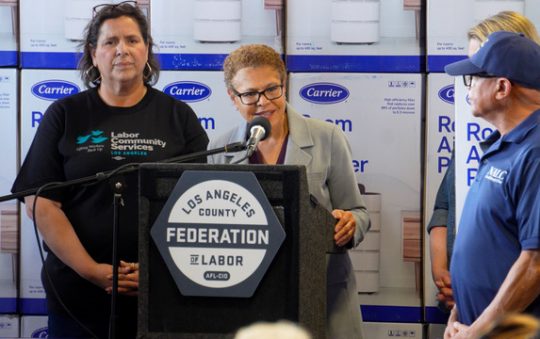
Organized labor is practically a shell of what it once was and regaining that strength is now a matter of urgent necessity. But Black unionists’ concerns are not a significant part of organized labors’ deliberations on regaining influence or real reform. For Black unionists, labor reform, in the public or private sectors, is mostly rhetoric not reality. These privileged conversations emanate from closed door decisions made by labor leaders, most of whom couldn’t care less about Black workers.
Debate over the future of the AFL-CIO began in earnest about 15 years ago when the Service Employees International Union (SEIU) started to focus on how to reverse the union’s continuing downward slide. Unfortunately, Blacks remain phantom-like non-participants in labor’s decision-making process. Unified, however, they would be significant participants in crafting organized labor’s future direction because strengthening themselves strengthens the labor movement itself.
In 2005, Bill Fletcher, president of the TransAfrica Forum, formed to raise awareness in the U.S. about issues facing the nations and peoples of Africa, the Caribbean and Latin America, offered an insightful perspective on organized labor’s “train wreck.”
Fletcher maintained SEIU’s main proposals were mergers of national/international unions so that there is less competition, better use of resources, and focusing unions on organizing workers in their core areas. He also felt, “ The greater challenge facing organized labor included: globalization and the manner in which the U.S. government had shifted more and more to the right and become increasingly hostile to workers; how unions should organize critical regions like the South and Southwest; how to strengthen the relationship between African Americans and Latinos in these regions in order to be successful; how to engage in political action in such a way that working people can advance agendas that represent their interests and not simply those of unions or political parties; the continued relevance of fighting racism and sexism; how to work cooperatively and build mutual support with workers in other countries and the critical importance of joining with others to fight for democracy.”
Fletcher believed labor’s fight had focused too much on in-house issues such as whether the AFL-CIO should give larger or smaller rebates to unions that are allegedly organizing and whether the Executive Council should grow or shrink. These contentious debates ignored more profound problems such as the way unions in the U.S. see themselves, their lack of a clear mission and strategy, and blindness to the real significance of a steadily growing, corporate-driven society.
Fletcher also felt the culture of the U.S. union movement generally precludes honest debate. Individuals or groups who raise unpopular opinions critical of leadership often find themselves isolated or undermined. Curiously, while some unions were threatening to leave the AFL-CIO, some were threatening to drive others out after very little discussion. No attempt was made by either side to bring the debate to the rank and file members.
While such a debate needed to take place, it should have been reframed in its entirety and connected to a compelling vision for the future of workers in the U.S. in the face of dramatic changes in the economy and the need to address how to stop using working people as cannon fodder in an unjust, imperialistic assertion of power. Fletcher intoned, “I keep wondering whether it is too much to ask of our leaders to think about the needs of working people rather than focusing on the alleged profundity of their rhetoric and the seductiveness of their own publicity.”
Nonetheless, the split among and between labor unions did afford Blacks and Latinos the opportunity, together, to craft reforms that could unapologetically benefit their respective groups and ultimately help build a stronger labor movement. In Los Angeles, Black-oriented labor groups would have benefited from an “umbrella” group in order to maximize their influence even while retaining primary affiliation with their respective unions. This would have strengthened their chances of actually accomplishing mutually agreed upon objectives.
It is critically important, and mutually beneficial, that external independent Black labor groups affiliate more directly and support Blacks in organized labor. However, In Los Angeles, for example, the A. Philip Randolph Institute, AFRAM (SEIU) and Coalition of Black Trade Unionists (CBTU) are floundering and in need of serious rejuvenation in order to provide stronger support for their respective members and Black workers in general. However, these groups have become shadows of their former selves and, as often as not, are now as much a part of the problem as the solution for Blacks in the labor movement. Still, the potential weight of such groups’ assisting Black unionists outweighs the devastating impact of their silence. Currently, collaborative efforts of the Los Angeles Black Workers Center (LABWC), SEIU Security Workers West and the Black Community, Clergy and Labor Alliance (BCCLA) is a up and running model for protecting the rights and increasing the strength of Black workers in Los Angeles.
The main point in today’s column is that Black unionists strengthening themselves internally, and working collaboratively with external support groups is the most effective way to get Black unionists to the decision-making tables with a strong voice. This would also help organized labor to reverse its downward spiral and reclaim its role as the nation’s pre-eminent advocate and protector of workers’ rights. This will not happen without the sustained participation of Black unionists and their supporters.






